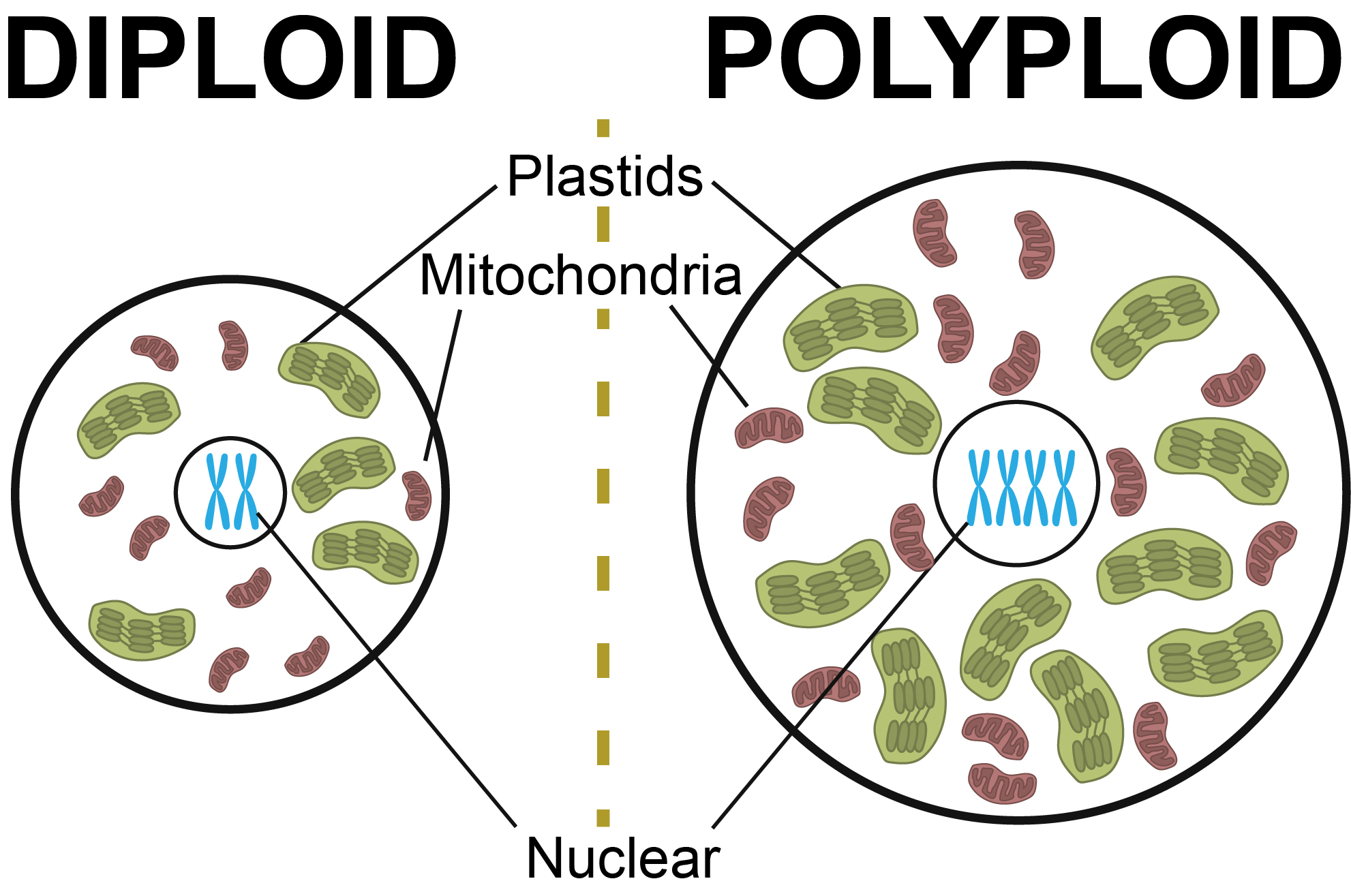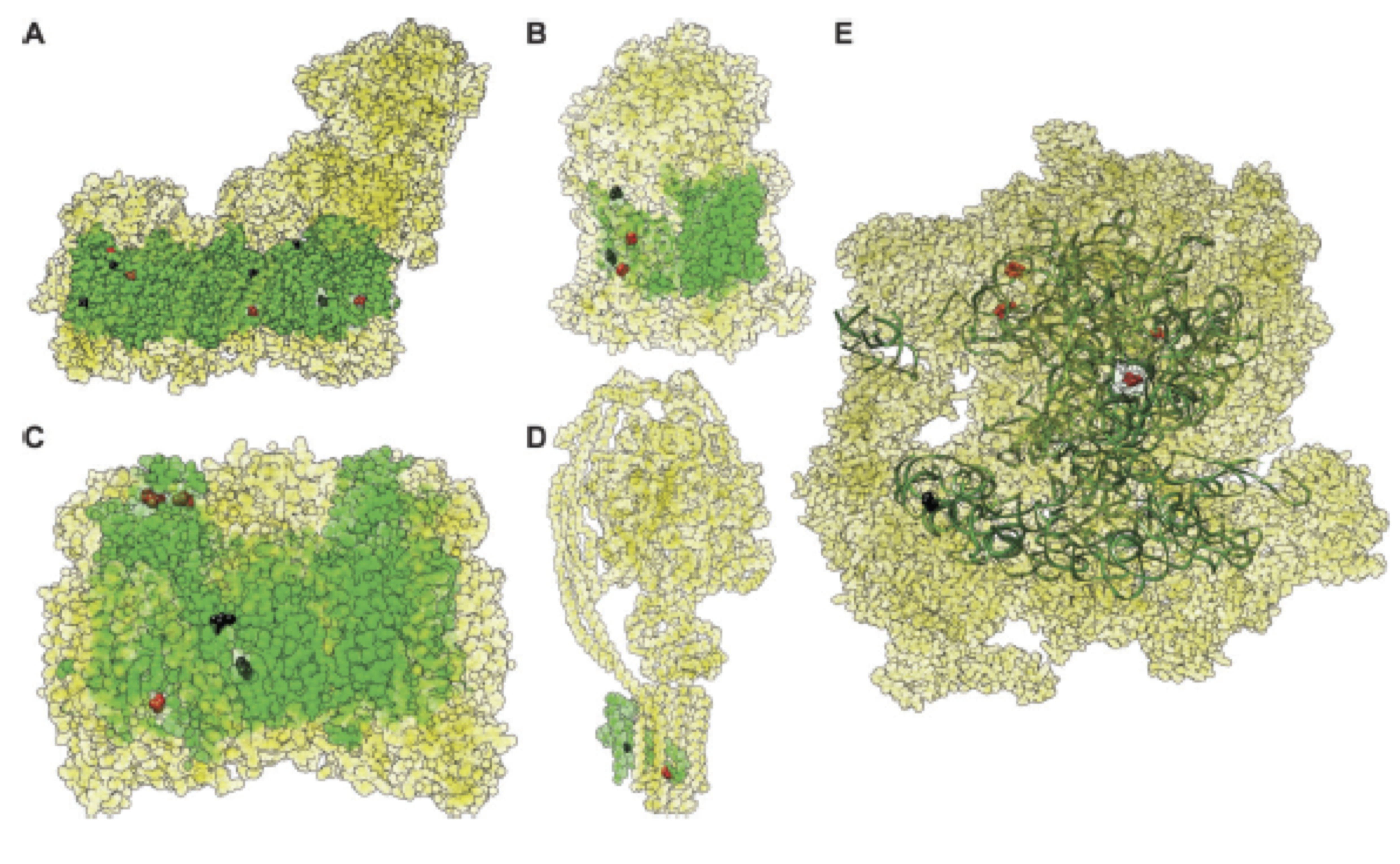RESEARCH

The enzymes that carry out cellular respiration and photosynthesis are distributed across three entirely distinct and separately inherited genomes, yet eukaryotic health and fitness is critically dependent upon their successful interaction. Moreover, maternally inherited cytoplasmic genomes rarely undergo sexual recombination and exist in dozens to thousands of copies per cell, while corresponding nuclear genomes are bi-parentally inherited, one or more copies from each parent, via sexual reproduction. My research investigates how, in the face of these fundamentally different genetic systems, mitochondria and chloroplasts are able to successfully maintain the molecular machinery responsible for nearly the entire supply of cellular energy.

Cytonuclear Stoichiometry in the Wake of Genome Doubling
Potential mechanisms to maintain cytonuclear stoichiometry in polyploid plants. Gene dosage imbalance of cytonuclear genetics in the wake of a WGD event likely has important consequences for organismal function both in the immediate aftermath and as an evolved response to polyploidy. The elevated nuclear gene copy number resulting from polyploidization may require compensatory mechanisms to maintain coordinated gene expression between organelle-encoded and organelle-targeted genes. Some mechanisms that aid in maintaining cytonuclear stoichiometry may scale allometrically with ploidy level (e.g., cell size, organelle number, and organelle size), while others likely require regulatory control by the nuclear genome (e.g., cytoplasmic genome copy number and nuclear/cytoplasmic gene expression regulation).

Cytonuclear Interactions and Introgression
The direct and physical interactions between nuclear-encoded and cytoplasmically encoded gene products has important consequences for the outcomes of introgression, as mutations at certain sites may change the three-dimensional structure of the subunit, such that additional, compensatory changes are favored by selection to maintain biochemical function. Divergence between species at these epistatically interacting loci may reduce rates of introgression and reinforce species boundaries between species. This phenomenon may be, at least in part, responsible for Darwin's Corollary to Haldane's Rule (i.e., interspecific reciprocal crosses often differ in whether fertilization occurs and in the viability and fecundity of hybrids).

Cytonuclear Incompatibilities in Allopolyploids
Cytonuclear incompatibility and molecular evolution of organelle-targeted genes in allopolyploid plants. Maternal inheritance of cytoplasmic genomes results in a more recent shared evolutionary history with the maternal nuclear subgenome than with the paternal nuclear subgenome in allopolyploids. As such, maternally encoded genes targeted to organelles are expected to interact with cytoplasmic genomes in hybrids more successfully than paternally encoded genes. Preferential expression of maternal transcripts is predicted to prevent cytonuclear mismatch in the short term (A), while pseudogenization (denoted by X symbol) of paternally inherited organelle-targeted genes and/or maternally biased gene conversion may evolve over longer timescales (B).
Contact Information
1123 Biological Sciences II
Ecology, Evolution, and Marine Biology
University of California – Santa Barbara
Santa Barbara, CA 93106
jsharbro [at] ucsb.edu